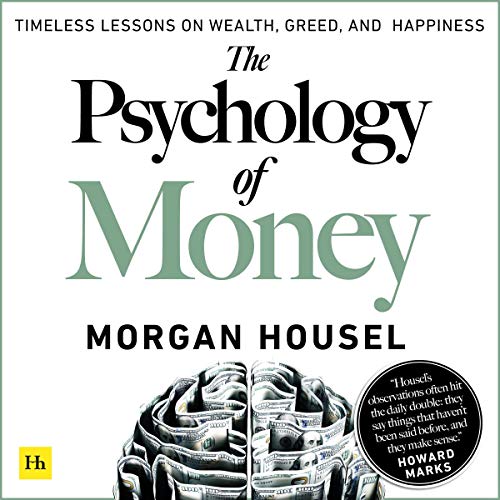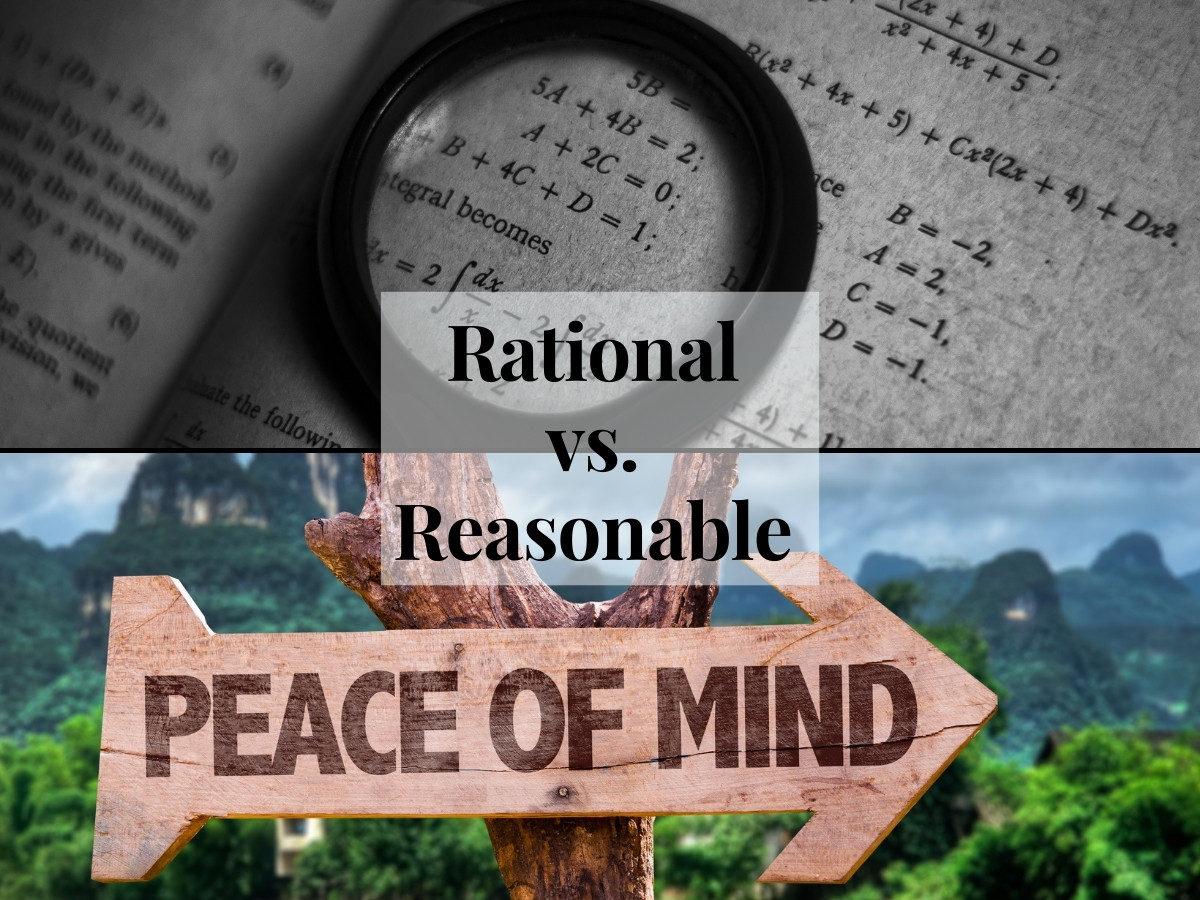BLUF: Financial decisions aren’t just about math and logic because humans aren’t robots. The most rational decision isn’t necessarily the right one for you if you can’t handle it emotionally. Our money choices just need to be reasonable. They need to allow us to feel good about them, stay the course and sleep well at night.
What Should I Do?
There’s a question that causes internet debates, and sometimes arguments, almost daily in the personal finance space. The question is: “what should I do?” or “what would you do?” and then insert a financial situation here ________. The financial situation varies but a few common ones are:
- Should I use extra money to pay down my mortgage faster or invest it?
- I came into a large amount of cash, what should I do with it?
- Should I use the debt snowball or the debt avalanche to pay off my debt?
There are typically two sides squaring off: the most financially optimal decision in the situation (what make or saves you the most money) versus some less financially optimal decision.
One group of people will be behind the financially optimal choice explaining the situation in terms of what the math “says”. Another group of people will offer up a choice that isn’t as financially optimal on paper but one that they’re very happy to have made and would make again. Which side is right? Which side is wrong? What should you do?
Rational vs. Reasonable

These two sides represent a conflict in financial decision making. Morgan Housel presented these two sides in one of my favorite books: “The Psychology of Money” as Rational vs. Reasonable. Rational being the most mathematically optimal decision and reasonable being a less optimal decision that is still financially sound and feels good. I found this to be the most impactful concept in the book and it’s what we’ll explore in depth here.
The Elephant And The Rider
Before we talk about rational vs. reasonable, I think it’s important address the elephant in the room (I know, I couldn’t resist). There is more to decision making than just unemotional logic and reason.
In the book Switch by the Health Brothers I was introduced to the concept of our thinking and feeling brains. There are two different decision making forces inside of us as complicated human beings: the thinking brain and the feeling brain.
The thinking brain is the logical, rational part of our brains. It’s the part running calculations and spreadsheet to determine how much house we can afford based on our budget, down payment, interest rate…etc. It’s the part of the brain at the grocery store buying the cheaper tuna fish based on unit price.
The feeling brain is emotional and is making decisions based on how we feel about the decision. It’s the part that walks into an open house for a home that you can’t afford and makes you say: “screw the budget, this feels like home.” It’s the part that sees that shiny black corvette on the car lot and now all you can think about is how awesome it will feel to drive that each day.
A wonderful metaphor for the power of these two decision making forces is an elephant with a human rider on top. The feeling brain is actually the massive, powerful elephant while the thinking brain is the puny rider on top.

That thinking brain rider may think that they’re in control because the elephant often listens to their commands. However, when the elephant doesn’t agree with the command the rider quickly learns who’s in control and they’re just along for the ride. The feeling brain elephant is in control and if there’s a conflict between the two it’s going to win. Every. Single. Time.
We like to think of financial decisions as something purely mathematical where logic can be applied to determine our decision. Being an engineer, I always assumed that all of my decisions were coming from a place of logic and reason in my brain. However, both thinking and feeling brains are involved and that feeling brain holds the power.
Rational vs. Reasonable vs. Emotional
I like to think about our financial decision making as a spectrum with pure math on one end and pure emotions on the other.
- Rational – A decision that’s based on what the logic or math says. The financially optimal choice to make without taking feelings into account.
- Emotional – A decision that’s based on what feels right. You don’t really know the financial implications (good or bad) of your choice because they haven’t been considered.
- Reasonable – A financially sound decision that’s a compromise between what’s most optimum financially and what feels right based on a persons experiences, goals and risk tolerance.

I think it’s important to recognize that while the rational decision, the financially best one, could be the same for a range of people, the emotionally best decision is highly personal and will vary widely. The feeling part of our brains brings into our decisions all of the life experiences that we’ve had along the way to shape us.
A retired person that sold all their stocks at the bottom in 2009 and never recovered is going to feel very different about the stock market than a younger investor who rode the subsequent bull market. A person that went bankrupt and lost their home in 2009 will feel very differently about mortgages, debt, leverage and risk than someone that’s never been foreclosed on before.
Rational vs. Reasonable – Real World Examples
With that framework in mind, let’s talk about some commonly debated decisions that show both sides of rational vs. reasonable argument. For each I’ll show the commonly argued rational choice along with some perfectly reasonable choices. It’s important to keep in mind that just because you wouldn’t choose one of the reasonable choices below doesn’t mean that it isn’t reasonable for someone else.
Invest Extra Money vs. Pay Extra To Your Mortgage

You have no debt except for your mortgage and you have extra money at the end of each month. Should you invest that money for retirement or make extra principle only payments to your mortgage to pay it off faster?
Rational Choice Argument: If your mortgage interest rate is 2-5% (or less), then paying extra to your mortgage is going to build wealth slower than investing that money in an S&P500 index fund that averages 8% returns historically.
Reasonable Choice Examples:
- Pay some extra to the mortgage and invest some of the extra.
- Put all extra extra cash to the mortgage to pay it off as fast as possible.
- Reducing your retirement contributions to let you pay off your mortgage faster.
It might be really important to someone to be debt free. I’ve heard people describe the feeling of paying off their mortgage as being one of the best feelings ever and that they wouldn’t trade it for the world.
Lump Sum Investing vs. Dollar Cost Averaging (DCA)

If you received a large chunk of money, should you invest the entire amount into the stock market at once (lump sum) or stretch out the investment of that money over weeks, months or years (dollar cost averaging (DCA)).
Rational Choice Argument: The S&P500 over time goes up on average, and you can’t time the market, so performance will be best if you put the whole lump in at once and give the money the maximum time in the market.
Reasonable Choice: Dollar cost average the money into the stock market. Come up with a schedule to invest that money over weeks, months or even years and put it on auto-invest.
The pain of losing money is far greater than the pleasure of increasing it. Studies have shown that the pain of losing $1,000 is twice as great as the pleasure of gaining the same $1,000. The goal here is to get the money invested as quickly as possible and keep it invested, but in a way that won’t make you do something irrational.
If you invest $100,000 as a lump sum, the market drops 10% and you sell and sit in cash for the next year then you aren’t going to come out ahead. I’d rather someone invest $10,000 a month for 10 months because they feel more comfortable doing than do a lump sum that will make them very nervous.
Debt Avalanche vs. Debt Snowball for Debt Payoff

The debt avalanche payoff method means that you pay off debts in order of the highest interest to the lowest. The debt snowball method means that you pay off the debts in order from the smallest balance to the largest, regardless of interest rates on the debts.
Rational Choice Argument: The avalanche method will get your debt paid off while paying the lowest amount of interest possible.
Reasonable Choice: Using the snowball method or some combination of the two methods to ensure that you get some quick wins and stick with the process.
Paying off debt can be analogous to trying to losing weight on a diet. If you choose a method where it’s hard to see some progress right away it’s discouraging and you may give up altogether. For example, if the first debt you tackle is a large one that takes a year to pay off by the avalanche method then you might just quit. If the first debt is a small $500 debt on a 0% interest offer but you get to eliminate that bill in one month then it’s reasonable to go for the easy victory. That feels good and can re-energize you to keep going.
Figuring Out What’s Reasonable For You

All of this is well and good, but knowing that we’re each uniquely messy emotional beings, how do we make the most reasonable choice for us? Here is my suggestion for working through a decision:
- Make a list of your big goals that relate to the decision at hand – It can be easy to get into the details of a situation and forget about the larger picture. If your big goal is to retire early, sell your house and travel the world then that will heavily influence the decision to pay down your mortgage versus invest.
- Really understand the arguments for the mathematically “optimal” approach – Even if you don’t take the perfectly rational option, I think it’s key to fully understand what that choice would be and why. Why does the math show that lump sum investing will outperform DCA historically? Through that education it might actually change your feelings about the risk at play and what the most reasonable choice is for you. You could also run some “what if” scenarios.
- For example, if you’re unsure about lump sum versus DCA, simulate what would have happened in a scenario. For example, if you lump sum invested $150,000 into the S&P500 in January of 2019 how would the performance today compare to investing $50,000 on 1/1/2019, 1/1/2020 and 1/1/2021?
- Write down any fears or worries that you have about the decision – It’s important to self reflect and understand that there are emotions at play with financial decisions. If there are certain outcomes that you’re afraid of happening then you need to acknowledge that. By identifying and acknowledging that worry you can then come up with options to address that fear.
- As a simple example, if one spouse is the breadwinner and the other takes care of the household then the household maintainer might be worried about what happens if the breadwinner dies. This risk and concern can be mitigated with term life insurance.
- Consider options that aren’t just “all or nothing” – Sometimes people get paralyzed because they only think in terms of decision extremes. In the pay down your mortgage example, I either pay nothing extra to the mortgage or I aggressively put everything extra to the mortgage. Life isn’t about binary decision making (2 choices). If you really aren’t sure what to do choose an option that does both. Take 50% of extra pay and put it toward the mortgage principle and invest the other 50%. One way to get ideas is to ask other people what they would do in your situation. Just be careful to use the responses as ideas, not to make the decision for you.
- Make a decision but don’t be afraid to revisit it – Many financial decisions can be reversed or adjusted if you don’t feel good about your decision. Don’t be paralyzed by a decision that can be easily adjusted in the future if it doesn’t work out as planned. Make a decision but then check back in periodically to see how you feel about it. If you have anxiety and check a new investment daily perhaps you’ve taken on too much risk and you need to change course.
Key Takeaways
- Financial decisions aren’t just about math and logic because humans aren’t robots. The most rational decision isn’t necessarily the right one for you if you can’t handle it emotionally. Our money choices just need to be reasonable. They need to allow us to feel good about them, stay the course and sleep well at night.
- There are a wide range of reasonable choices out there so be careful about giving or receiving one size fits all advice. What’s reasonable for one person based on their experiences, goals and risk tolerance might be completely unreasonable for another person.
- Nobody can tell you what’s the most reasonable decision for you, except you. Keep that in mind when asking others what they would do in your situation. A good fixed fee financial planner might be the most skilled at doing this for other people as they are trained to understand your goals, risk tolerance and worries and then offer up options that they think align with that information.
- It’s okay to choose reasonable over rational. Don’t let others get you down because your rational choice didn’t maximize your wealth. Financial metrics aren’t the only indicators of a good decision.
Like the content? Click here to subscribe to the e-mail list and have the articles delivered to your inbox.

